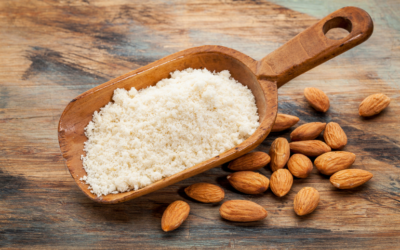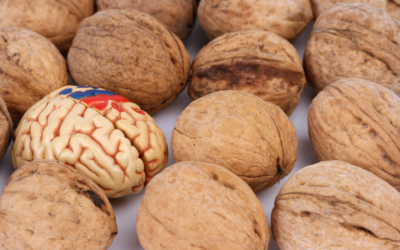
Almond gum, also known as badam pisin or almond resin, is a natural sap or gum harvested from the almond tree. This unique substance has been used for centuries in various cultures for its culinary and medicinal properties. In this in-depth article, we will explore the origins, production process, culinary applications, and health benefits of almond gum, shedding light on this often-overlooked natural treasure.
The Origins of Almond Gum
The almond tree is native to the Middle East and Mediterranean regions, where it has been cultivated for its delicious and nutritious nuts for thousands of years. Almond gum, however, is a lesser-known product derived from the almond tree’s sap. The gum is extracted through a meticulous process that involves making small incisions in the almond tree’s bark. As the sap oozes out, it is collected and left to solidify, forming translucent and amber-coloured gum crystals.
The Production Process
The production of almond gum is a labour-intensive and time-consuming process that requires both skill and patience. Here’s an overview of how almond gum is produced:
- Harvesting the Gum: The almond tree’s bark is gently incised, allowing the sap to flow out. This sap, often referred to as “gum exudate,” is carefully collected using special tools.
- Drying and Solidifying: The collected sap is left to dry and solidify naturally. This process can take several weeks, during which the gum transforms into hard, translucent crystals.
- Cleaning and Grading: Once solidified, the gum is cleaned and graded to remove impurities and ensure uniform quality.
- Packaging: The graded almond gum is packaged into various sizes and forms, making it ready for distribution and use.
Culinary Applications
Almond gum’s culinary applications are as diverse as they are intriguing. In Indian cuisine, it is often used to make a refreshing summer drink called “badam pisin sherbet.” To prepare this drink, almond gum is soaked in water until it swells and becomes gelatinous. The resulting mixture is then sweetened with sugar, flavoured with rose or saffron, and garnished with chopped nuts and seeds. Badam pisin sherbet is cherished for its cooling properties and is particularly popular during hot summer months.
Almond gum is also a versatile ingredient in Middle Eastern and Mediterranean cuisines. It is used to thicken and texture a variety of desserts, including ice creams, puddings, and jellies. Due to its unique gelling properties, almond gum can be employed as a natural vegetarian substitute for gelatin in recipes.
Health Benefits of Almond Gum
Beyond its culinary uses, almond gum offers a range of potential health benefits:
Cooling Properties
In traditional Ayurvedic medicine, almond gum is believed to have cooling properties that can help soothe the body during hot weather. It is often recommended as a natural remedy to combat heat-related ailments and dehydration.
Digestive Aid
Almond gum is considered a natural digestive aid. It can help relieve common digestive issues such as indigestion and constipation. When consumed as part of a balanced diet, it may promote regularity and digestive wellness.
Weight Management
Due to its high fiber content, almond gum may contribute to a feeling of fullness and satiety. This can be beneficial for those looking to manage their weight by reducing overall calorie intake.
Skin Benefits
Almond gum is sometimes used in skincare products for its potential to improve skin texture and reduce the appearance of blemishes. When applied topically, it may help cleanse and rejuvenate the skin.
Nutrient Content
Almond gum contains essential nutrients such as dietary fiber, protein, and antioxidants. These nutrients can support overall health and well-being when incorporated into a balanced diet.
It’s important to note that while almond gum offers potential health benefits, individual experiences may vary, and it should not be used as a sole treatment for medical conditions. As with any natural remedy or dietary supplement, it’s advisable to consult with a healthcare professional before incorporating almond gum into your health or wellness regimen.
Almond Gum Recipes to Try
Here are three diverse almond gum recipes that showcase the versatility of this unique natural resin:
1. Almond Gum Milkshake:
Ingredients:
- 2 tablespoons almond gum crystals
- 1 cup milk (dairy or non-dairy)
- 2 tablespoons sugar (adjust to taste)
- 1/4 teaspoon cardamom powder (optional)
- A few saffron strands (optional)
- Crushed ice
Instructions:
- Place the almond gum crystals in a bowl and add enough water to cover them. Let them soak for 4-6 hours or overnight until they become soft and gelatinous.
- In a blender, combine the soaked almond gum, milk, sugar, cardamom powder, and saffron strands (if using).
- Blend until you have a smooth and creamy mixture.
- Add crushed ice and blend again until the shake is chilled and frothy.
- Taste and adjust the sweetness if needed by adding more sugar.
- Pour the almond gum milkshake into glasses, garnish with chopped nuts or saffron strands, and serve immediately.
2. Almond Gum Dessert (Badam Pisin Pudding):
Ingredients:
- 1/4 cup almond gum crystals
- 1 cup water
- 1 cup milk (dairy or non-dairy)
- 1/4 cup sugar
- 1/4 teaspoon cardamom powder
- A handful of chopped nuts (almonds, pistachios, or cashews)
Instructions:
- Soak the almond gum crystals in water for 4-6 hours or until they become soft and gel-like.
- Drain and rinse the soaked almond gum thoroughly to remove any residual impurities.
- In a saucepan, combine the almond gum, milk, and sugar.
- Heat the mixture over medium heat, stirring continuously until it thickens and reaches a pudding-like consistency (about 15-20 minutes).
- Add cardamom powder and mix well.
- Remove from heat and let it cool slightly.
- Transfer the almond gum pudding to serving bowls, garnish with chopped nuts, and refrigerate until it sets.
- Serve chilled as a delightful dessert.
3. Almond Gum Rose Falooda:
Ingredients:
- 2 tablespoons almond gum crystals
- 2 cups milk (dairy or non-dairy)
- 2 tablespoons rose syrup
- 1/4 cup cooked falooda sev (vermicelli)
- 1 tablespoon basil seeds (sabja seeds)
- Chopped nuts for garnish (pistachios, almonds)
- A scoop of vanilla ice cream (optional)
Instructions:
- Soak the almond gum crystals in water for 4-6 hours or until they become soft and gel-like.
- Drain and rinse the soaked almond gum thoroughly.
- In a glass, layer the ingredients: Start with a tablespoon of soaked basil seeds at the bottom, followed by cooked falooda sev and soaked almond gum.
- Pour rose syrup over the layers.
- Gently pour chilled milk over the layers.
- Add a scoop of vanilla ice cream (if desired) and garnish with chopped nuts.
- Serve the almond gum rose falooda with a long spoon and enjoy!
These recipes highlight the delightful and refreshing ways in which almond gum can be incorporated into beverages and desserts, offering a unique texture and subtle flavour to your culinary creations.
Conclusion
Almond gum, derived from the almond tree’s sap, is a natural resin with a rich history of culinary and medicinal uses. Its cooling properties, digestive benefits, and versatility in cooking make it a valuable ingredient in various cultures. As interest in natural and traditional remedies continues to grow, almond gum’s unique qualities are once again gaining recognition, offering a tantalizing blend of taste and potential health benefits for those who explore its culinary and wellness possibilities.






